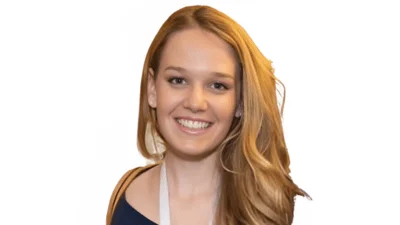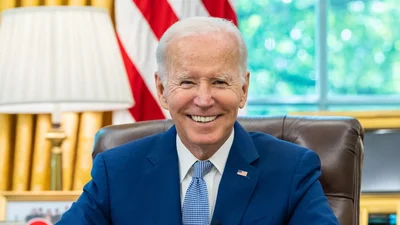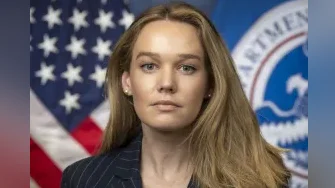FOR IMMEDIATE RELEASE WEDNESDAY, SEPT. 10, 2003 WWW.USDOJ.GOV CRM (202) 514-2008 TDD (202) 514-1888 WASHINGTON, D.C. - Acting Assistant Attorney General Christopher Wray of the Criminal Division and Enron Task Force Director Leslie R. Caldwell announced today that former Enron Corp. Treasurer Ben Glisan has pleaded guilty to conspiracy to commit wire and securities fraud and immediately was sent to prison to serve a five-year sentence.
Glisan entered the plea this morning before Judge Kenneth Hoyt of the U.S. District Court in the Southern District of Texas. Pursuant to his plea agreement, Glisan was sentenced by Judge Hoyt to serve 60 months in prison, and Glisan surrendered following the sentencing hearing to begin serving his prison sentence. As part of todays plea agreement, Glisan also agreed to forfeit $938,000 to the United States and not to seek a refund from the U.S. Treasury of approximately $412,000 in income taxes. After his release from prison, Glisan will be under supervised release for an additional three years.
Glisan had been named in 26 counts of a superseding indictment returned by a federal grand jury in Houston, Texas, on May 1, 2003. That indictment also named former Enron Chief Financial Officer Andrew Fastow and former finance executive Dan Boyle in connection with an ongoing criminal investigation into Enrons multibillion-dollar collapse.
At his plea hearing today, Glisan admitted that, while he was Enrons corporate Treasurer, he and others conspired to falsify Enrons reported financial results, making the company appear more successful than it actually was. In 2000, Glisan and others at Enron used LJM, an investment vehicle run by Fastow, to falsify Enrons financial picture to the public; in turn, LJM received a pre-arranged profit. LJM was used by Enron in the spring of 2000 when Enron created a Special Purpose Entity (SPE) known as Talon (also referred to as Raptor 1), which was designed to enable Enron to avoid reflecting certain investment losses on its balance sheet. Under applicable accounting rules, Talon could not properly be kept off Enrons balance sheet unless at least three percent of its equity funding was from a third-party investor whose funds genuinely were at risk of loss and Enron did not control the SPE.
Glisan admitted that he and others at Enron deliberately structured Talon in a way that appeared to comply with, but in fact violated, applicable accounting rules. Most of Talons funding came from Enron, in the form of a promissory note and Enron stock. Talons three percent outside equity investment, totaling $30 million, came from LJM, an Enron SPE controlled by Enron officials Andrew Fastow and Michael Kopper. Glisan admitted that he and others at Enron knew that Talon was not properly off-balance sheet, because they agreed that, before Talon would engage in any of the activities for which it was created, Enron would return LJMs investment in full, plus an agreed-upon profit, for a total of $41 million. Once that payment was made, LJM was no longer truly at risk, and Enron effectively had full control of Talon. Thus, Talon should have been included on Enrons books, and Enron should have revealed publicly the substantially decreased value of its investments.
Because they knew that Enrons up-front return of LJMs investment in Talon meant that Talon was not properly off-balance-sheet, Glisan and others manufactured an ostensible reason for Enron to pay $41 million to LJM. Specifically, Enron and Talon entered into a put option transaction, which purported to hedge Enron against a decline in its own stock value. Enron then purchased the put, paying $41 million to LJM. In fact, the put had no business purpose and was instead designed to hide the truth: that Enron was engaged in deliberate fraud designed to remove unfavorable information from its publicly reported financial results.
The illegal Talon/Raptor 1 structure served as a prototype for three additional SPE vehicles, Raptors 2, 3 and 4. The Raptor vehicles were of crucial significance to Enron in hiding its failing financial picture from the public. The Raptor vehicles insolvency in the fall of 2001 played a substantial part in the ultimate collapse of Enron.
Todays plea further demonstrates the increasingly elaborate - and fraudulent - accounting games used by Enron to conceal what has now become apparent: Well before its ultimate collapse in 2001, Enron was a badly failing business, said Acting Assistant Attorney General Christopher Wray. Mr. Glisan today accepted responsibility for his part in Enrons collapse. We fully intend to see to it that all those who have criminal responsibility are brought to justice. The investigation into Enrons collapse is being conducted by the Enron Task Force, a team of federal prosecutors supervised by the Departments Criminal Division and agents from the FBI and the IRS Criminal Investigations Division. The Task Force also has coordinated with and received considerable assistance from the Securities and Exchange Commission. The Enron Task Force is part of President Bushs Corporate Fraud Task Force, created in July 2002 to investigate allegations of fraud and corruption at U.S. corporations.
The Enron Task Force has brought several charges in its investigation, in addition to the charges against Fastow, recently set for trial in April 2004, Glisan and Boyle. Fastows wife, former Enron Assistant Treasurer Lea Fastow, was charged in May 2003 with conspiracy to commit wire fraud, money laundering conspiracy and filing false tax returns, and trial is set for January 2004. Another indictment charged former Enron Broadband Services executives Kevin Howard and Michael Krautz, along with former EBS Chairman Kenneth Rice, former president and co-CEO Joseph Hirko, former Chief Operating Officer Kevin Hannon, and former Senior Vice Presidents Scott Yeager and Rex Shelby with participating in a long-running scheme to defraud the investing public and others through a series of false statements and press releases about EBSs financial condition.
In August 2002, former Enron finance executive Michael J. Kopper pleaded guilty to conspiracy to commit wire fraud and money laundering, and is cooperating with the governments investigation. Former Enron energy traders Timothy N. Belden and Jeffrey Richter pleaded guilty in October 2002 and February 2003, respectively, to conspiracy to commit fraud by manipulating energy prices in the California market. In September 2002, a federal grand jury in Houston returned an indictment charging three former British bankers with wire fraud in a scheme involving the Southampton special purpose entity. In November 2002, former Enron finance executive Larry Lawyer pleaded guilty to making and subscribing a false tax return. And Enrons former top outside auditor, Arthur Andersen partner David Duncan, pleaded guilty in 2002 to obstructing an SEC investigation into Enron. Andersen itself was convicted of obstruction of justice in June 2002.
The Task Force investigation is continuing. 03-492
Source: US Department of Justice







